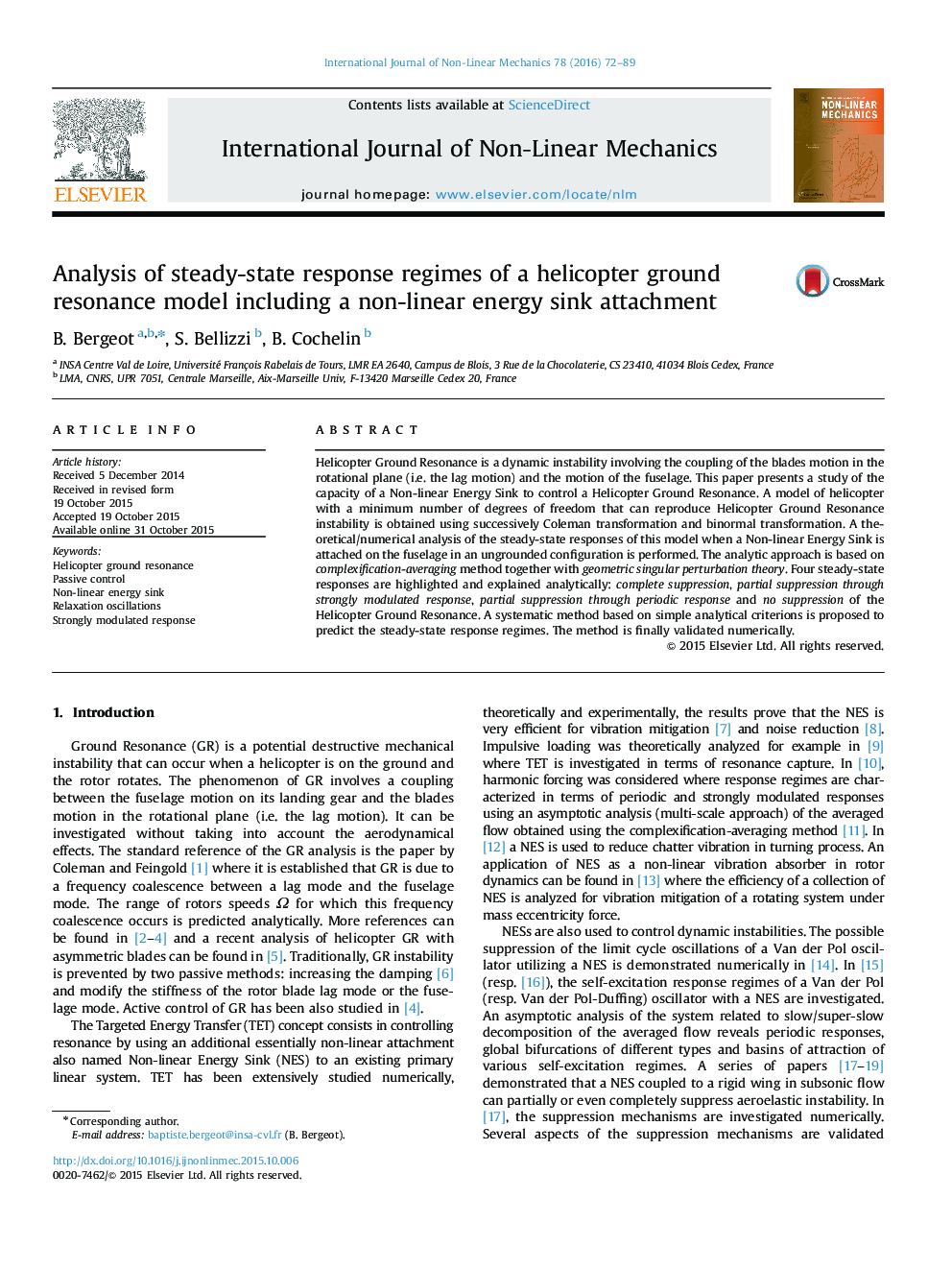| Article ID | Journal | Published Year | Pages | File Type |
|---|---|---|---|---|
| 784944 | International Journal of Non-Linear Mechanics | 2016 | 18 Pages |
•A simplified model reproducing Helicopter Ground Resonance is described.•We analyzed this model when a Non-linear Energy Sink is attached on the fuselage.•Four steady-state responses are highlighted and explained analytically.•A method is proposed to predict the steady-state response regimes.•The method is finally validated numerically.
Helicopter Ground Resonance is a dynamic instability involving the coupling of the blades motion in the rotational plane (i.e. the lag motion) and the motion of the fuselage. This paper presents a study of the capacity of a Non-linear Energy Sink to control a Helicopter Ground Resonance. A model of helicopter with a minimum number of degrees of freedom that can reproduce Helicopter Ground Resonance instability is obtained using successively Coleman transformation and binormal transformation. A theoretical/numerical analysis of the steady-state responses of this model when a Non-linear Energy Sink is attached on the fuselage in an ungrounded configuration is performed. The analytic approach is based on complexification-averaging method together with geometric singular perturbation theory. Four steady-state responses are highlighted and explained analytically: complete suppression, partial suppression through strongly modulated response, partial suppression through periodic response and no suppression of the Helicopter Ground Resonance. A systematic method based on simple analytical criterions is proposed to predict the steady-state response regimes. The method is finally validated numerically.
